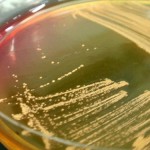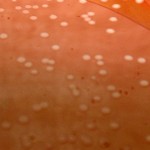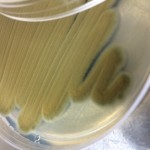Clean Sleep Microbial Study Validates Effectiveness
Numerous studies and tests validate the effectiveness of heat, ozone, ultraviolet C and steam in reducing harmful bacteria. Prior to building our very first prototype, Clean Sleep spent a considerable amount of time researching what it takes to effectively target the contaminants found on mattresses. We consulted this data along with our scientific input to determine what works best in our apparatus.
Our 3rd party microbial study is focused on observing specific micro-organisms that cause infection control issues for healthcare facilities. In 2011 alone, almost half a million individuals in the U.S. suffered from an infection caused by C. diff., and more than 100,000 of these infections developed among residents of nursing homes. Patients and residents spend a lot more time in their beds in these facilities and the The prevention and elimination of C. diff in medical facilities and assisted living communities could save thousands of lives and millions of dollars in health care, ultimately improving the overall quality of life for patients and residents.
Test Microorganism Information
 Staphylococcus aureus ATCC 33592 (MRSA)
Staphylococcus aureus ATCC 33592 (MRSA)
This bacteria is a Gram-positive, cocci shaped, aerobe which is resistant to the penicillin-derivative antibiotic methicillin. MRSA can cause troublesome infections, and their rapid reproduction and resistance to antibiotics makes them more difficult to treat. MRSA bacteria are resistant to drying and can therefore survive on surfaces and fabrics for an extended period of time and therefore makes this bacteria an excellent representative for antimicrobial efficacy testing on surfaces.
Results of the Study – S. aureus 33592 (MRSA)
Enterococcus faecalis ATCC 51575 (VRE)
This bacteria is a Gram-positive, spherical-shaped strain of Enterococcus faecalis that has developed resistance to the antibiotic vancomycin. E. faecalis (VRE) can cause a variety of local and systemic infections including endocarditis, bacteremia, and urinary tract infections, which are exceptionally difficult to treat because of this strain’s acquired drug resistance. Due to this bacterium’s robust survival factors and resistance to commonly used antimicrobial agents, this bacterium is very challenging to disinfect.
Results of the Study – S. aureus 33592 (MRSA)
MS2 Bacteriophage (MS2) ATCC 15597-B1
This virus is a non-enveloped positive-stranded RNA virus of the bacteriophage family Leviviridae. Bacterial cells are the hosts for bacteriophages, and E. coli 15597 serves this purpose for MS2 bacteriophage. Its small size, icosohedral structure, and environmental resistance has made MS2 ideal for use as a surrogate virus (particularly in place of picornaviruses such as poliovirus and human norovirus) in water quality and disinfectant studies.
Results of the Study – MS2 Bacteriophage 15597-B1 (A1)
Permissive Host Cell System for MS2: Escherichia coli, 15597
Aspergillus brasiliensis ATCC 9642
This fungi is a conidiophore, or a sexual spore generating aerobic fungus. A. brasiliensis, formerly listed as a strain of A. niger, is related to other Aspergillus species in that they produce spores which are highly resistant to chemical and environmental conditions. A. brasiliensis is commonly used as a benchmark fungus for antimicrobial fungicides and preservatives used in pharmaceutical and personal care products.
Results of the Study – A. brasiliensis 9642
Clostridium difficile ATCC 43598 (Endospores) 
This bacteria is a Gram-positive, rod shaped, endospore generating obligate anaerobe. Clostridium species are part of the normal human gut flora that produce spores which are highly resistant to chemical and environmental conditions. C. diff is commonly associated with hospital acquired infections and is know to cause antibiotic assisted colitis. Because of it’s high resistance to antimicrobials, C. difficile is a benchmark bacteria for sporicidal and sterilant activity of chemicals.
Results of the Study – C. difficile 43598 (Endospores)
Cladosporium cladosporioides ATCC 16022
This heavily sporulating fungi is a dematiaceous mold, meaning that it is characterized by the olive-to-black pigmentation of its conidia and hyphae. It is prevalent in indoor and outdoor environments, and is a plant pathogen that affects wheat. Frequently isolated from air, Cladiosporium has a world-wide presence and is one of the early colonizers of humid indoor environments growing on such substrates as gypsum, paper, paint, and textiles. As a common allergen, this species has been known to induce hay fever and asthma in humans.

